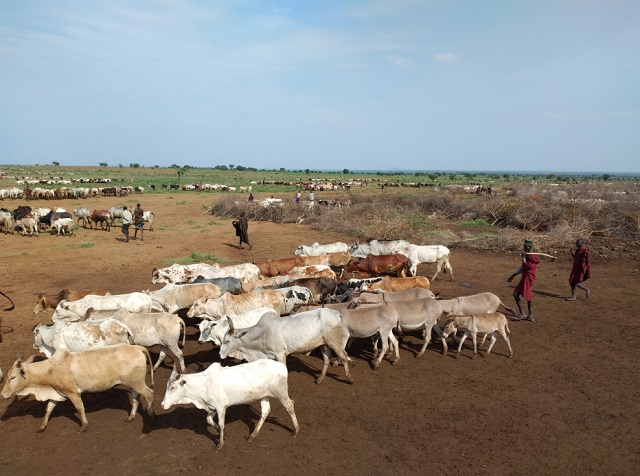
What went wrong after Janet Museveni left?
Kampala, Uganda | RONALD MUSOKE | Janet Museveni, the First Lady, who was first appointed Minister of State for Karamoja Affairs in 2009 and two years later became the substantive Minister of the sub-region, had a grand vision: to make Karamoja a self sufficient and prosperous region of Uganda.
Close to 40,000 guns had just been collected from the warriors following a decade-long disarmament exercise by the UPDF. Starting around 2006 and 2011 the government engaged in a disarmament exercise to attempt to end a culture of cattle raiding that had become increasingly destructive since automatic weapons became available in the late 1970s, both within and beyond Karamoja’s borders.
Janet Museveni noted she would make food sufficiency for Karamoja a top priority following the restoration of peace in the region.
Soon, land was opened up for agriculture. She also made diversification of food crops, livestock breeds, harvesting water for production, elimination of dependence on food aid and boosting the school feeding programmes as solutions to Karamoja’s eternal insecurity problem. Cattle rustling which made the region one of the most insecure in the country soon became history.
But three years after her exit from the region in 2016, the region is once again a cattle rustling battle field. Many are wondering what exactly happened after Janet Museveni left Karamoja?
Peter Abrahams Lokii, the MP for Kotido Municipality told The Independent in July last year that Karamoja has been suffering since the government pulled UPDF troops out of the region. He said a vacuum was then created that the cattle entrepreneurs exploited and local people began re-armament.
“From the use of bows and arrows to steal one or two cows, gunshots became louder around the region and the thieves are taking thousands of cattle,” he said. Local leaders say cattle raiders have been stealing the animals and moving them at night and selling them for as a low as Shs 200, 000.
“A village that loses 700 cows in one swoop loses about Shs 1.5 billion; people are losing a lot of money in the ongoing cattle raids,” said Simon Peter Longoli, the executive director of the Karamoja Development Forum, an indigenous non-profit that is building capacity to protect pastoralist rights in the region. These raids are subjecting people who are already vulnerable to more decades of poverty,” he told The Independent recently.
Karamoja; a conglomeration of nine districts, is about 27,511 sq km in size with a population of about 1.2 million people.
But the sub-region holds about 30% of Uganda’s livestock wealth including 20% of the nation’s cattle, 16% of its goats, nearly half of all sheep, over 90% of donkeys and all camels, according to the most recent available statistics from the Uganda Bureau of Statistics published in 2009.
The Karimojong are pastoral people but many are now struggling to protect their prized asset: the cattle. In the last one year, the escalation of insecurity has grown as livestock thefts have advanced into the peri-urban and urban areas of the region, leading to an increasing loss of lives and property in these areas.
These incidents started as a conflict between pastoral communities straddled along the Kenya-Uganda border, namely the Dodoth ethnic community of Kaabong and the Turkana of Kenya, but later advanced towards the Jie of Kotido before spreading into central Karamoja (Matheniko of Moroto and Bokora of Napak).
What started as isolated incidents of theft of a handful of cattle towards the end of 2019 soon grew into organised cattle raids and later expanded to include wanton killings of innocent persons and theft of household property.The criminality spiked mid this year, breaking 15 years of relative calm following the 2003 and 2008 disarmament of rustlers by the UPDF.
During the first disarmament, the Karimojong were told that the government soldiers would protect them. But then, the government cut UPDF numbers in the region massively following successful disarmament. But this was at odds with community perceptions of insecurity.
Civil society actors say the government’s assessment of improved security and successful disarmament in Karamoja do not seem to reflect the continued insecurity felt by communities, and their doubts about the ability of the UPDF to provide adequate protection.
When the UPDF left, they had to arm themselves again to protect their cattle. The gun traffickers often exploit Karamoja’s vast landscape and sparse population coupled with porous international borders with Kenya and South Sudan.
 The Independent Uganda: You get the Truth we Pay the Price
The Independent Uganda: You get the Truth we Pay the Price



The government should deploy security personnel.